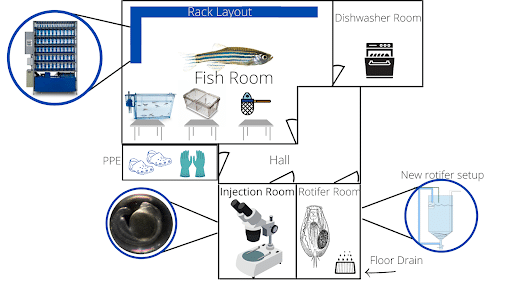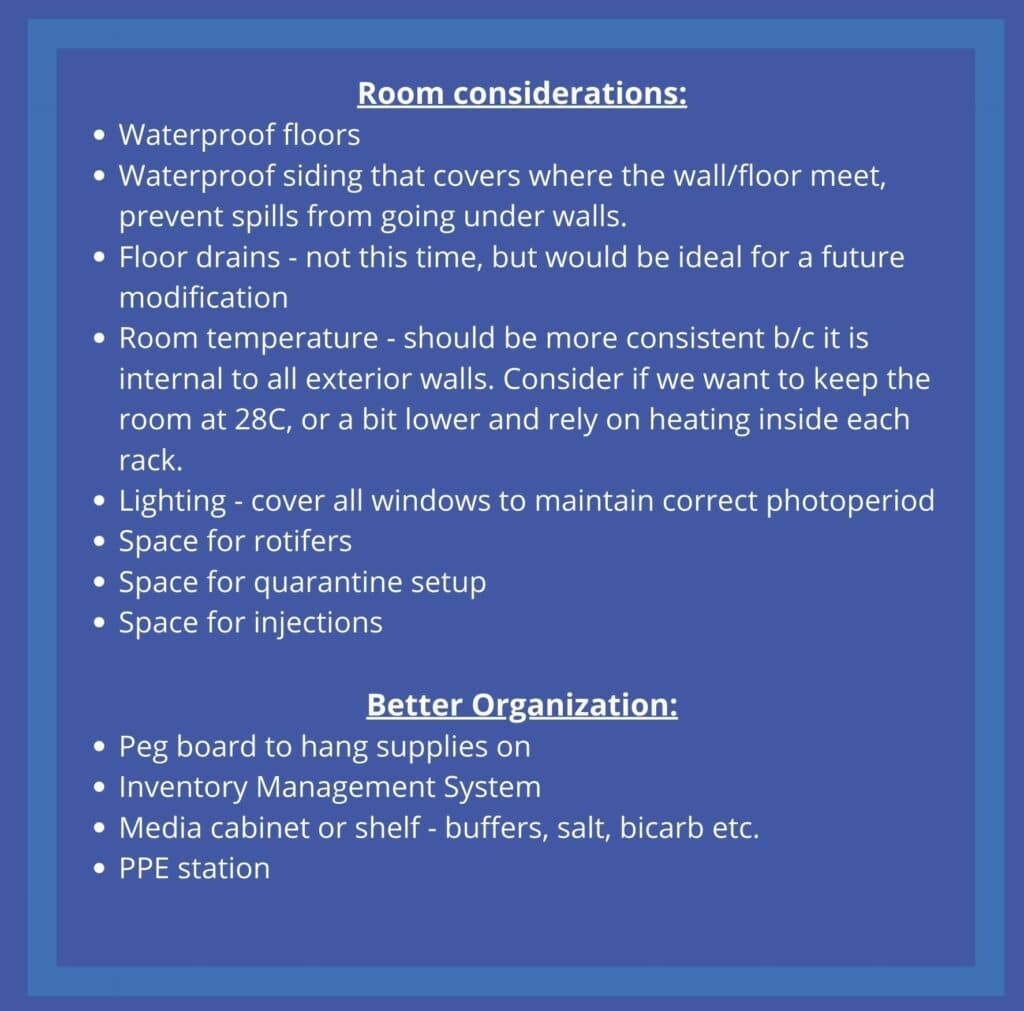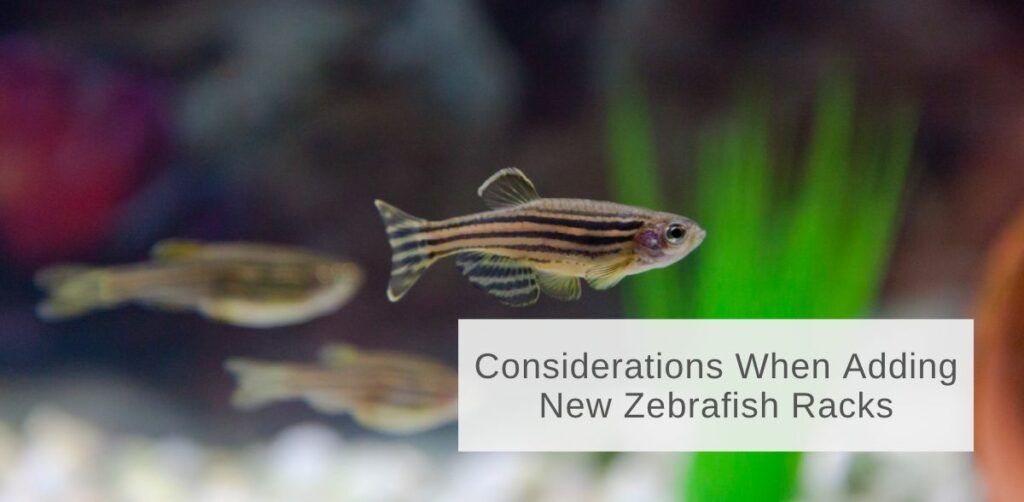Over the years InVivo Biosystems has worked closely with the University of Oregon Aquatic Animal Care Services (AqACS) to deliver the highest quality animal care and husbandry on behalf of our clients, particularly for creating and rearing precisely engineered zebrafish for disease modeling. This partnership has allowed us to rapidly meet the growing need for creation of custom zebrafish lines. As our company’s abilities and capabilities have expanded, it has also created an exciting opportunity to expand our on-site zebrafish facility. So we are excited to share that our own facilities will be quadrupling in size!

Figure 1. Layout of InVivo Biosystems’ expanded zebrafish facility
The InVivo Biosystems zebrafish facility, or as the team lovingly calls it “The Fishbowl”, is getting a makeover. This upcoming expansion will support additional capabilities to meet our clients’ needs. Specifically, having more zebrafish racks at our facility will allow us to grow significantly more animals at a time, and allow us to house up to 6 times more zebrafish larvae than our current capacity. The expanded nursery will significantly improve our ability to produce wild-type zebrafish, which are necessary to provide in-vivo testing of sgRNAs for Validated Injection Mixes, Mosaic Clutches, and Full Build projects. We also use wild-type zebrafish to test donor homology integration, and other reagents required for enhancing genome editing. Wild-type zebrafish are also a useful model to test compounds used in metabolomics for our growing industrial pharmaceutical and nutraceutical client base. And finally, having more fish on site reduces travelling to access the animals, allowing for faster processing of samples and screening of embryos, and ultimately decreasing the time spent on certain project steps.
While this expansion is exciting – adding to our fish facility capacity isn’t as simple as just adding more tanks to the existing space [Figure 2].

Figure 2. Considerations when expanding a zebrafish facility.
When considering the area, for example, we had multiple options for expansion. We could tear down a wall to create plenty of space, but the room would be an awkward shape to work in. We briefly considered building in a warehouse area, but the high ceilings would not be conducive to keeping the room warm. We ultimately decided to expand into a large, central room which had no exterior walls. Having an interior location means that it will be easier to maintain a stable temperature on very hot or cold days, which is important for fish health, and reduces the load on building thermostats. With the new fish facility located centrally, the temperature should be easier to regulate. This room was also already outfitted with linoleum flooring and waterproof ceiling tiles, as well as only having one window. It is necessary for the fish facility to be controlled on a specific light cycle, so with only one window to blackout, creating a light controlled room was simplified.
When planning for a facility expansion, our next consideration was how we were going to feed the increased number of larvae in our care. We quickly realized it was going to be necessary to increase our rotifer culture size, so our technical team began to plan the best ways to do this. To accommodate the increased production needed, our technical team designed a new size and style of culture container that will allow us to produce an excess amount of rotifers to easily sustain the increase in our nursery population.
Another consideration we had to plan for was how we were going to efficiently clean and sanitize our tanks. Currently, our tanks are cleaned via bleaching, rinsing and neutralizing them prior to re-use. While there is nothing wrong with cleaning tanks this way, it does require a significant amount of hands-on time, and operating a larger facility makes this method impractical. To solve this problem, we are adding a large scale dishwasher which provides a less hands-on method for cleaning the increased number of tanks. This dishwasher will be held in an adjacent room that is easily accessible from the main fish room area, but far enough away that the noise will not impact the fish.
The most important aspect of expanding the fish facility is of course keeping the zebrafish healthy. While we have been planning and executing aspects of the fish facility expansion, we have maintained our consistent high level of care to our current zebrafish population. We plan to do no less than our best with the future zebrafish as well, focusing not only on having healthy fish but also enriched fish, because after all, excellent science begins with exceptionally healthy and happy fish. The facility expansion, including the new location, rotifer system, and cleaning systems, will allow us to provide the best possible care to our zebrafish. The commitment to zebrafish health at our facility builds on the world class care we currently enjoy at UO AqACS and we will continue to use both facilities to best meet our clients needs. Follow along as we progress with our zebrafish facility changes; we are excited to share the joys and challenges of expanding our zebrafish facility in the upcoming months!





